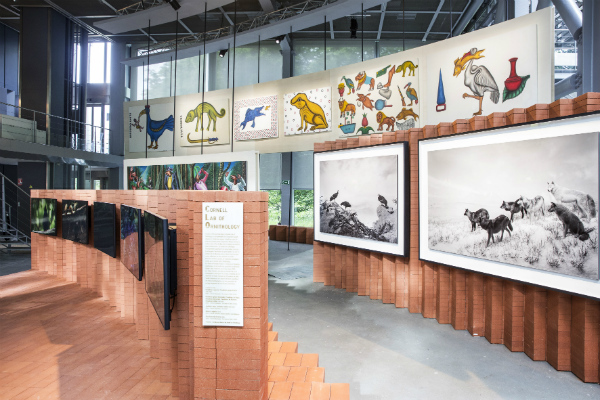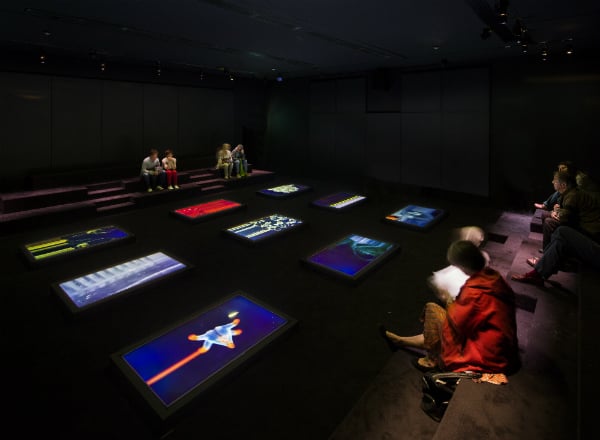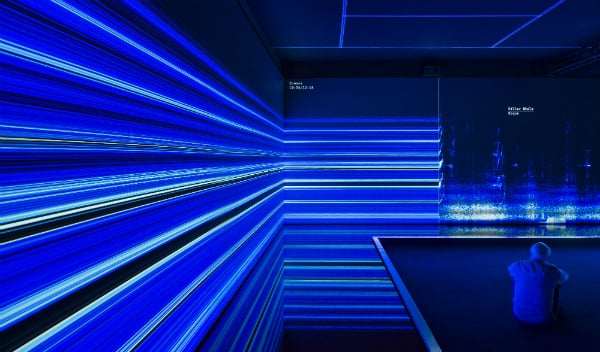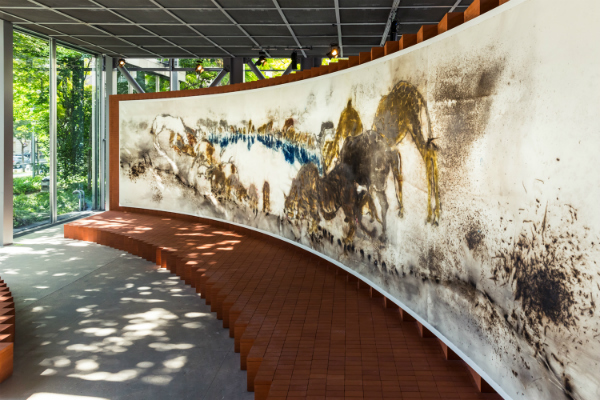Reviews
‘The Great Animal Orchestra’ at Fondation Cartier is the Oddest and Most Refreshing Show of the Summer
Nature, sound art, and new media come face to face at the Parisian institution.

Nature, sound art, and new media come face to face at the Parisian institution.

Emily Nathan

“’The Great Animal Orchestra’ is a show to be lost in. It’s like a promenade, like a landscape with different valleys, different hills. You walk, you think —it inspires vagabondage,” said Fondation Cartier director Hervé Chandès last week, at the preview for an exhibition inspired by the work of American musician and bioacoustician Bernie Krause. “This is a show about beauty, pleasure, the mysteries of nature—and it is also about knowledge, but not in a didactic way.”
On view in Paris through January 8, 2017, “The Great Animal Orchestra” is an unconventional show indeed. While featuring works in various media by artists from Asia, Africa, the Americas, and Europe, including Chinese gun-powder master Cai Guo-Qiang, photographer Hiroshi Sugimoto, filmmaker Agnès Varda, British collective United Visual Artists, and Congolese painter JP Mika, the presentation is grounded in the ecological activism pursued for decades by Krause, a pioneer in the domain of “biophony.”
Born in 1938 in Detroit and trained as a musician, Krause is widely known for introducing the Moog synthesizer to film and music, and his work can be found on albums by Van Morrison, Brian Eno, and David Byrne, among others. Over the course of 50 years, he also traveled widely, collecting thousands of sound recordings of natural habitats both terrestrial and marine which have helped form the basis of new scientific disciplines. The exhibition takes its title from one of his books, in which he describes his work’s grounding in “the art of actively listening with all one’s being.”

Installation view of “The Great Animal Orchestra” at Fondation Cartier pour l’art contemporain, 2016, Paris. Photo Luc Boegly.
“People who deeply know nature—and I mean real nature, not the park—we know that it’s very difficult to see animals, but you can hear them,” Chandès said. “So sound is a way to map and understand the natural world. Bernie’s eponymous book greatly affected me, and inspired this show; and it was interesting to take an institution devoted mostly to images, and to do something different with it.”
There is, therefore, a distinctly aural element to the exhibition. This is provided in part by Krause’s own sound recordings, which demonstrate environmental degradation through marked decreases in the volume and variety of biophony. On the Foundation’s lower level, these have been transformed into an immersive, digital environment by United Visual Artists: Spectographs suggesting scenes from the natural world are projected on large surface areas in concert with Krause’s recordings, while the surface of a pool of black-colored water on the floor is disrupted by the sounds issuing from the speakers, creating ripples and waves.

Installation view of “The Great Animal Orchestra” at Fondation Cartier pour l’art contemporain, 2016, Paris. Photo Luc Boegly.
Other contributors work in a similar vein that seems to combine contemporary new media and the grand tradition of natural history museums and aquariums. Videographer Shiro Takatani and composer Ryuichi Sakamoto for example, have created a sound and video installation all about plankton, based on the data collected by biologist Christian Sardet aboard the research schooner Tara between 2009 and 2013. Plankton, A Drifting World at the Origin of Life features a synchronized projection on 9 screens installed on the floor—some showing video footage of microorganisms, and some Sardet’s photographs — as well as a digital soundtrack that emulates the rhythms and music of deep sea. It’s a serene, meditative space that feels both abstract and very specific, almost antithetical to the heady, self-conscious strain of video art so prominent in today’s art landscape.
Similarly refreshing is a serious of aviary videos upstairs in the foundation’s main gallery space. Contributed by the Cornell Lab of Ornithology, these awe-inspiring snapshots of the mating rituals of various bird species open our eyes to the jaw-dropping beauty of the natural world. Rather than confine the five videos to small galleries, or provide headphones, Chandès has chosen to install them en plein air, as it were, so that their various musical strains—squawks, shrill cries, trills—fill the space, and create the sensation that the Foundation has been overtaken by animals.

Installation view of “The Great Animal Orchestra” at Fondation Cartier pour l’art contemporain, 2016, Paris. Photo Thomas Salva / Lumento.
Such sensory stimulation is echoed, of course, by the foundation’s structure itself: a glass box surrounded by lush flora in the center of Paris, it has never been a standard space for showing art. Works displayed inside it are not cut off from their surroundings, and any viewing experience is in some way inflected by the greenery outside. The idea of a theatre is mirrored in the exhibition by Mexican architects Mauricio Rocha and Gabriela Carillo, who created a circular exhibition design from terracotta bricks that recalls a Greek amphitheater. Installed in the center of the stage, an 18-meter long gun-powder composition by Cai Guo-Qiang, titled White Tone, portrays a variety of wild animals gathered around a watering hole—a moment in which the theater of the natural world comes together for us to observe.
On the other side of the wall, this is echoed by a series of photographs by Japanese artists Manabu Miyazaki. Strange and surreal, these images use a robotic “camera trap” to surreptitiously photograph animals in the same environments usually inhabited by humans, opening windows onto the intersection between the man-built and natural world in the moments when nobody is there to see it.
“Ultimately, I do not think that this exhibition is about nature,” Chandès concluded. “I think that this exhibition is created with nature.”
“The Great Animal Orchestra” is on view at the Fondation Cartier, Paris, from July 2, 2016-January 8, 2017.